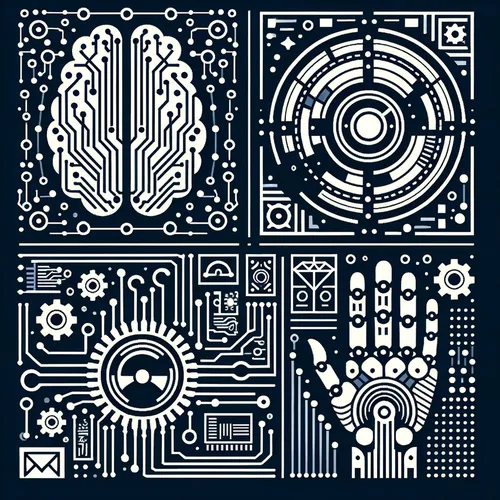Robots Steal Jobs & Hearts: AI Sparks Billion-Dollar Love Triangle
- Author
- Quiet. Please
- Published
- Wed 03 Sep 2025
- Episode Link
- https://www.spreaker.com/episode/robots-steal-jobs-hearts-ai-sparks-billion-dollar-love-triangle--67618133
This is you Emerging Technology Trends: AI, Robotics & Digital Innovation podcast.
Global technology is moving at breathtaking speed, fueled by innovations in artificial intelligence, robotics, quantum computing, blockchain, and connected devices. As of September 2025, industry reports from organizations like The Business Research Company and Future Today Strategy Group indicate that the artificial intelligence in robotics market will surge from about 23 billion dollars this year to nearly 65 billion dollars by 2029—a staggering compound annual growth rate of 29 percent. In parallel, the broader robotics sector is on track to more than double over the next five years, with forecast valuations exceeding 150 billion dollars by 2030 according to analysis from Nasdaq and MarketsandMarkets. These numbers reflect an inflection point: robots are transitioning from rigid, pre-programmed tools to adaptive systems capable of learning, perceiving, and collaborating thanks to advanced AI, improved sensors, and powerful cloud connectivity.
Recent breakthroughs underscore this transformation. Generative AI now drives intuitive robot interfaces, enabling users to direct machines using natural language and even creative problem-solving. In factories, AI-powered pick-and-place robots can autonomously reduce automation costs by up to 90 percent, as reported in manufacturing case studies from Siemens. Collaborative robots—known as cobots—are surging in adoption, especially in sectors like healthcare, logistics, and agriculture. These new systems use machine vision and real-time data to interact both safely and productively with human coworkers, adapting to novel tasks and preventing accidents. Startus Insights highlights over 910 startups and 1,380 firms actively developing such systems, with 150 patents and 310 grants secured just in the past year.
Cross-industry innovation remains a defining feature, from surgical robots that triple efficiency in hospitals to autonomous equipment tackling risky construction tasks. This wave of digital transformation also leverages quantum computing for big data analysis, blockchain for secure device authentication, and enterprise Internet of Things solutions that connect and optimize entire ecosystems. According to IIOT World, industrial IoT now represents nearly three-quarters of market revenue, while predictive AI models promise to cut downtime and open new fronts for productivity.
Research and development activity is surging worldwide, especially in key hubs like Tokyo, Bangalore, San Francisco, and London. Investment is flowing rapidly, targeting startups and established players focused on intelligent automation, advanced sensors, and robot-as-a-service platforms. China leads in patent activity, while the United States remains a top center for both financing and technological leadership.
However, integrating these technologies comes with challenges. Organizations must address interoperability, retrain their workforce, and navigate evolving regulatory frameworks. Ethical considerations are increasingly central, as governments weigh how best to govern autonomous systems and artificial intelligence. Successful deployments are less about replacing people and more about strategic augmentation, as seen in initiatives where workers move into oversight and decision-making roles.
Listeners should watch for ongoing regulatory moves, such as the European Union’s push for AI guidelines set to take effect in late 2025, and monitor venture capital trends that increasingly favor startups addressing practical integration solutions. Actionable steps for those leading in technology or investment include: prioritizing workforce training, investing in scalable and interoperable platforms, and staying abreast of evolving ethical standards. Preparing for this future means embracing adaptive, data-driven systems and being ready to evolve alongside them.
